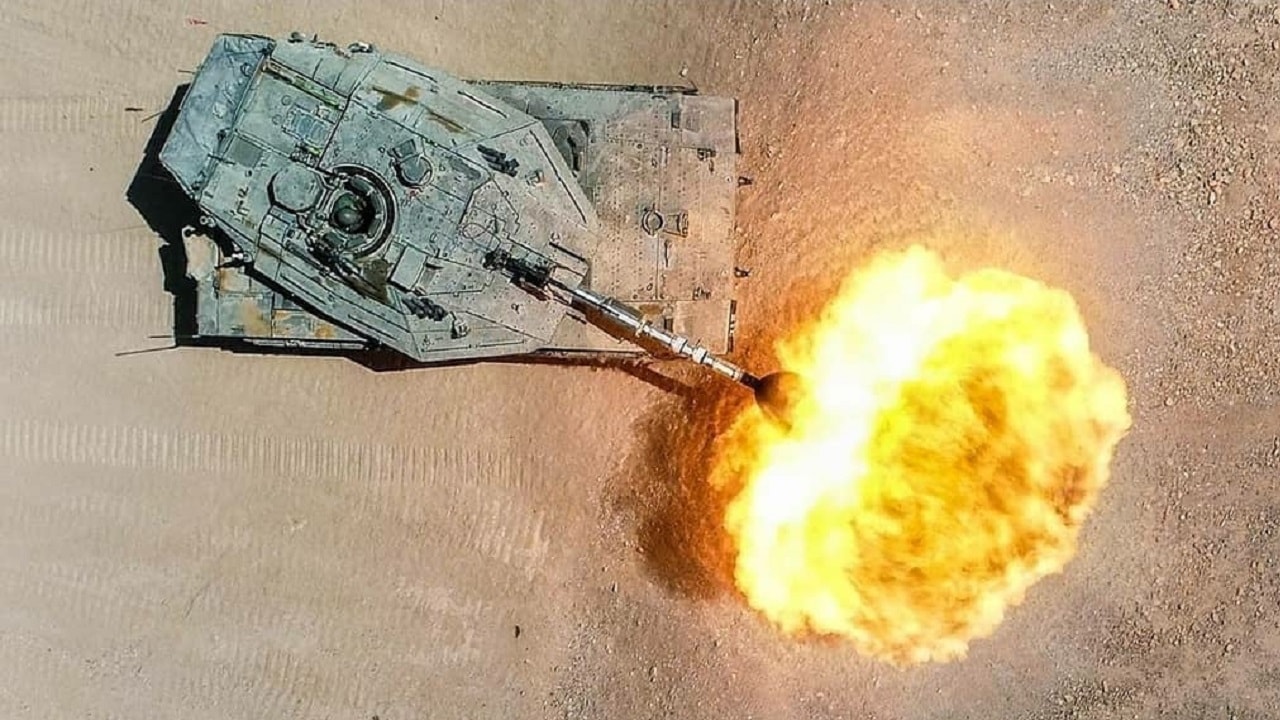The war in Ukraine will surely be studied for years after it is finally over. That could mean many military experts declare the age of the tank dead and buried, as countless pieces of armor were destroyed on the battlefield. Or not? One expert gives us his take: While the exact number of Russian tanks that have been destroyed or other immobilized in Ukraine cannot be confirmed, the numbers are significant. Even on the low-end, it is likely several hundred and that is in just under four months of fighting. Russia’s main battle tanks (MBTs) have shown to have significant vulnerabilities, while poor intelligence and simply bad tactics have been factors in the massive losses of the armored vehicles. Moreover, western-made anti-tank weapons – including the U.S.-made Javelin and British NLAW – have proven to be extremely effective when employed against a Russian MBT.
Videos circulated on social media of captured Russian armor being towed away by Ukrainian tractors, while images of destroyed hulks with the turrets blown off are routinely posted online.
According to multiple reports, a teen using a small drone helped Ukrainian forces target Russian armor in the early days of the invasion.
No More Armor?
Even as many military experts have suggested that it is far too soon to consider this the end of the “Age of Tanks,” the conflict will likely impact future tank programs. That could include the Franco-German Main Ground Combat System (MGCS), which has an estimated development cost of €1.5 billion (U.S. $1.6 billion), which could face delays or even cancelation.
“Just as high-intensity warfare is underway in Europe, we cannot lose a program designed to help the survival of European defense,” Yohann Michel, a research analyst in Berlin with the International Institute for Strategic Studies think tank, told Defense News on Monday.
The war has highlighted flaws with Russian tank designs, notably how ammunition was stored near the turret in the T-72 and T-90 MBTs to feed an autoloader. This has resulted in a so-called “jack-in-the-box” effect where a hit from an anti-tank weapon can result in the ammunition being set off, which then blows the turret clean off the tank. Western analysts have reportedly known about the flaw since the Gulf War, but the Kremlin seemed to simply ignore the problem.
Bad Tactics
In addition to the design flaws, poor tactics have been also been under the microscope. Videos have shown how Russian tanks convoys have all too easily been ambushed due to a lack of support on the ground. Unprotected tanks are extremely vulnerable to such attacks – a fact known to military planners since the first armored behemoths rolled into action during the Battle of Somme in 1916.
Russian commanders had ignored 100 years of tactics and drove their tanks through Bovary, on the outskirts of Kyiv, with virtually no protection in March. The column was targeted by mortars and artillery and was quickly decimated.
“In Brovary, a well-trained NATO armored column would have been accompanied by infantry to stop an ambush,” retired British Army Brig. Ben Barry, a senior land warfare fellow at the IISS think tank in London, also told Defense News. “Tanks must be part of a combined arms team. Instead, the Russian tanks have suffered huge losses from [Next generation Light Anti-tank Weapons], Javelins and even Soviet-era anti-tank weapons.”

M1 Abrams Tank. Image: U.S. Government.
While military experts have suggested that canceling the MGCS would not be the right course of action, lessons from Ukraine do need to be considered in that and any other tank program going forward.
Now a Senior Editor for 1945, Peter Suciu is a Michigan-based writer who has contributed to more than four dozen magazines, newspapers and websites. He regularly writes about military hardware, firearms history, cybersecurity and international affairs. Peter is also a Contributing Writer for Forbes.

